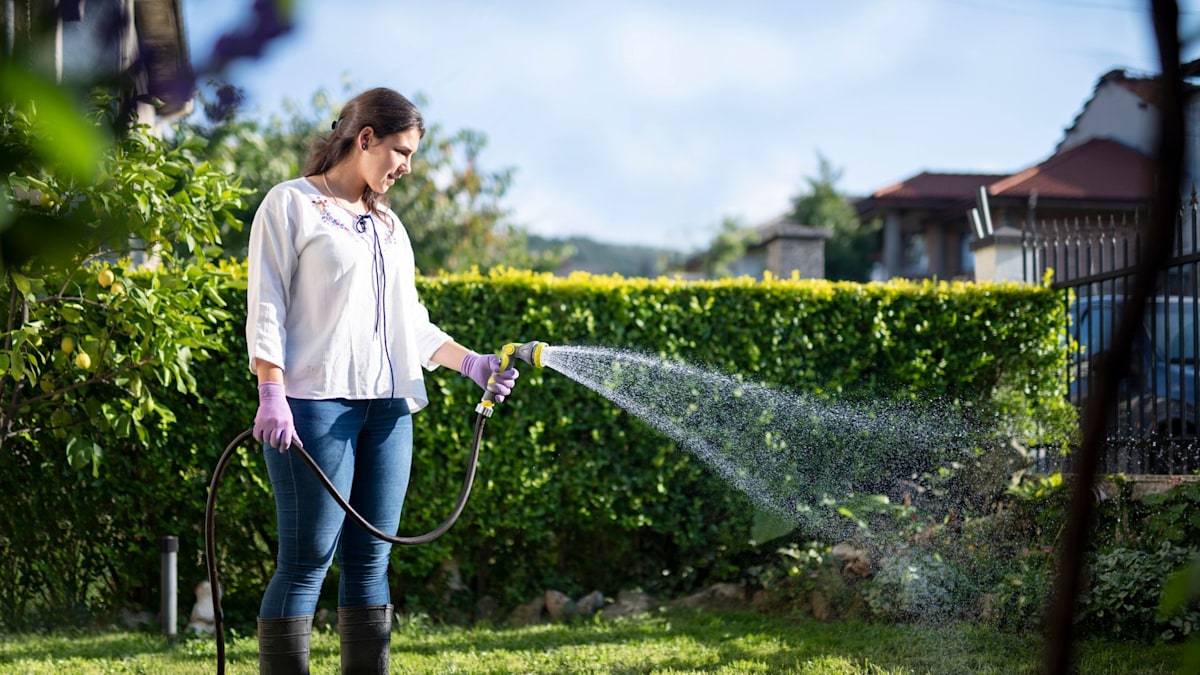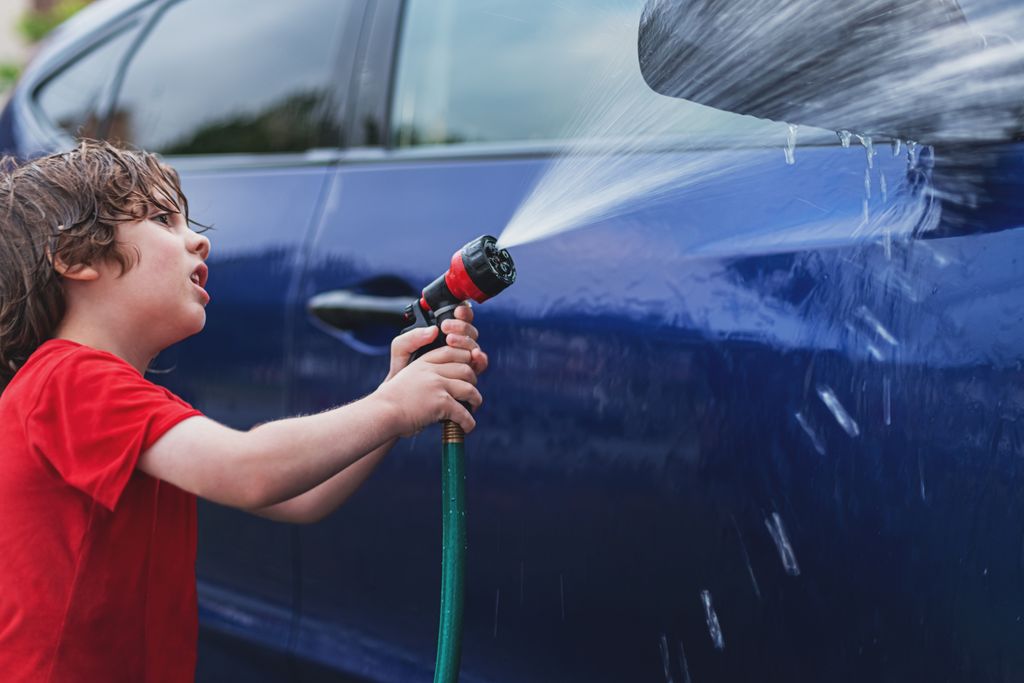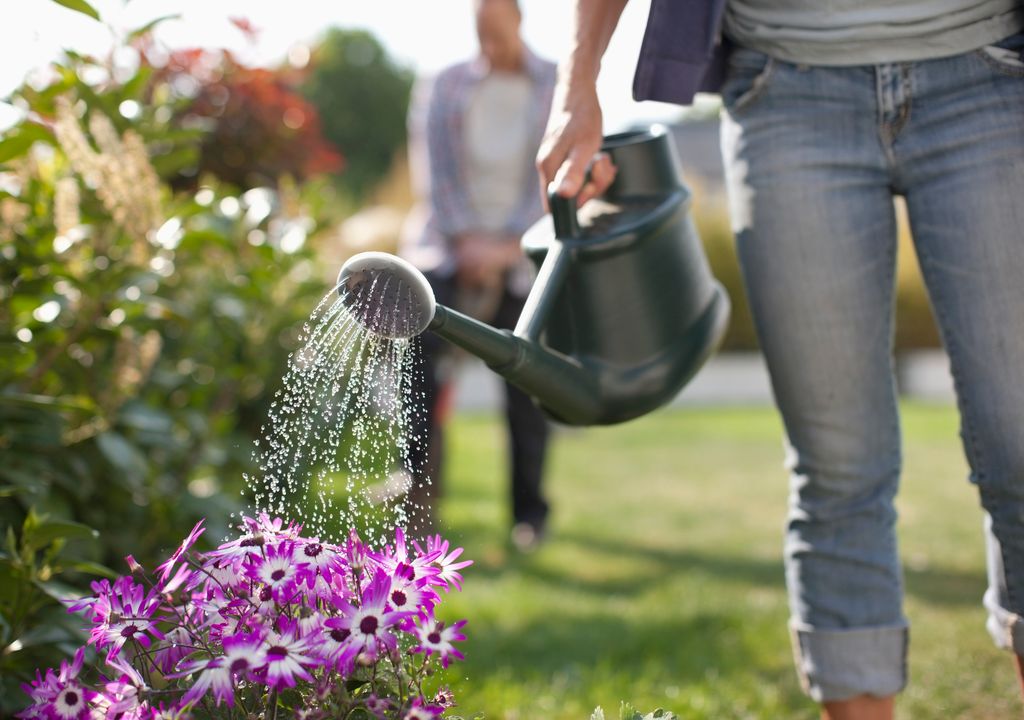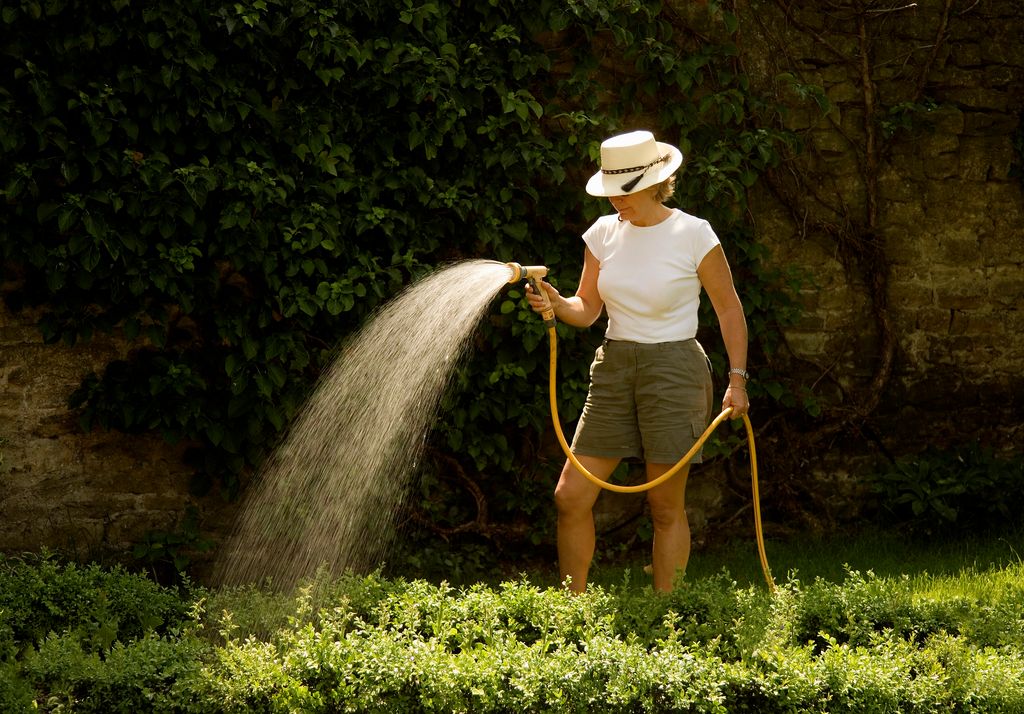After the driest spring in England for 132 years and big heatwaves, it’s no wonder The Environment Agency has declared a national drought. There are a growing number of water providers issuing hosepipe bans with millions of people being told they cannot use theirs. So, what are the hosepipe ban rules and how can you save your sorry-looking lawn? Everything you need to know…
Hosepipe ban rules
According to the Water Industry Act 1991, Section 76, here is what you are forbidden from doing.
- Not allowed to water the garden, including flowers and lawn, with a hosepipe
- Not allowed to wash your car with a hosepipe
- Not allowed to fill a paddling pool with a hosepipe
- Not allowed to fill a water feature or bird bath with a hosepipe
Does my allotment count?
Yes, this is classed as a garden, unless the land is used commercially.
What happens if you break the hosepipe ban rules?
Your water company will usually issue a warning to you if you are caught breaking the rules, but if the breach continues you could face a fine of up to £1,000.
Can I use a watering can instead?
Yes, most water boards allow the use of a watering can, but the excessive use of a hose is what is being tackled with the ban.
Beat the hosepipe ban – how to keep your garden looking healthy
Even though you cannot use your hosepipe, there are still genius ways you can water your garden – you just have to get inventive…
Gardening expert Lucie Bradley on behalf of David Wilson Homes says the number one thing you can do is “reuse grey water”. This means using “shower water, kitchen sink water, and leftover bathtub water,” as long as it doesn’t have any harsh chemicals or pollutants.
Is your lawn in particular struggling? Lucie points out that “a great way to help keep a lawn hydrated throughout the hotter summer months is to leave grass clippings on the lawn after mowing – known as mulch”. However, she warns it may be too late to do this now. “During these [heatwave] periods, grass plants are under a lot of stress and may not recover from mowing. Instead, wait until the temperatures cool down and at least 24 hours after rainfall or watering.”
Jamie Shipley at Hedges Direct suggests “moving garden pots and containers into the shade to help them survive hot spells more easily”. He continues: “Soil in containers dries out quickly so providing shade helps them keep cool and allows water to be transported around the plants more easily and keeps them growing and functioning normally.”
When you have got water that you may have collected from your home or an outside water butt, make sure you time your watering correctly. “The best time to water plants in hot weather is early in the morning, late evening or even in the middle of the night,” says Jamie.
“That’s because cooler temperatures allow roots to absorb water more efficiently and ensure valuable water isn’t lost through evaporation. Watering plants in full sunlight can also lead to leaf burn or scorch. It’s better to wait until the sun goes down or get up early in the morning to carry out watering.”
Cherry Lane Garden Centres recommend future-proofing your garden for further droughts by “adding drought-tolerant plant varieties to your garden, plants like lavender, sedum, and ornamental grasses are naturally better at coping with dry spells and require less watering”.
Hosepipe ban exemptions
Why are some areas under a hosepipe ban and others are not? Well, it is up to the specific water companies if they want to enforce this rule, so that’s why it could be different depending on which part of the country you are in. Plus, there are also very specific exemptions so please check your provider. For example, those with new lawns that need watering could even be let off the hook. The South East Water website, for example, explains one exemption is the “watering of new lawns at domestic premises, where this cannot reasonably be undertaken with a watering can and the turf was laid before the on set of the ban.”
Current bans:
Yorkshire Water – begins 11 July
South East Water – begins 18 July
Thames Water – begins 22 July
Read the full article here










